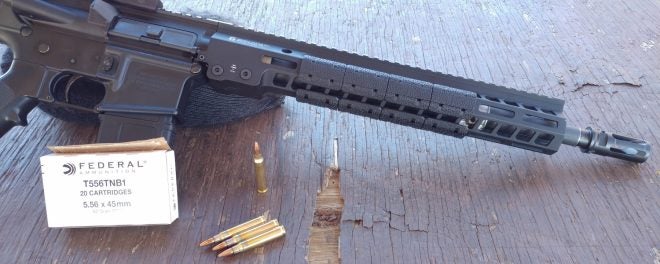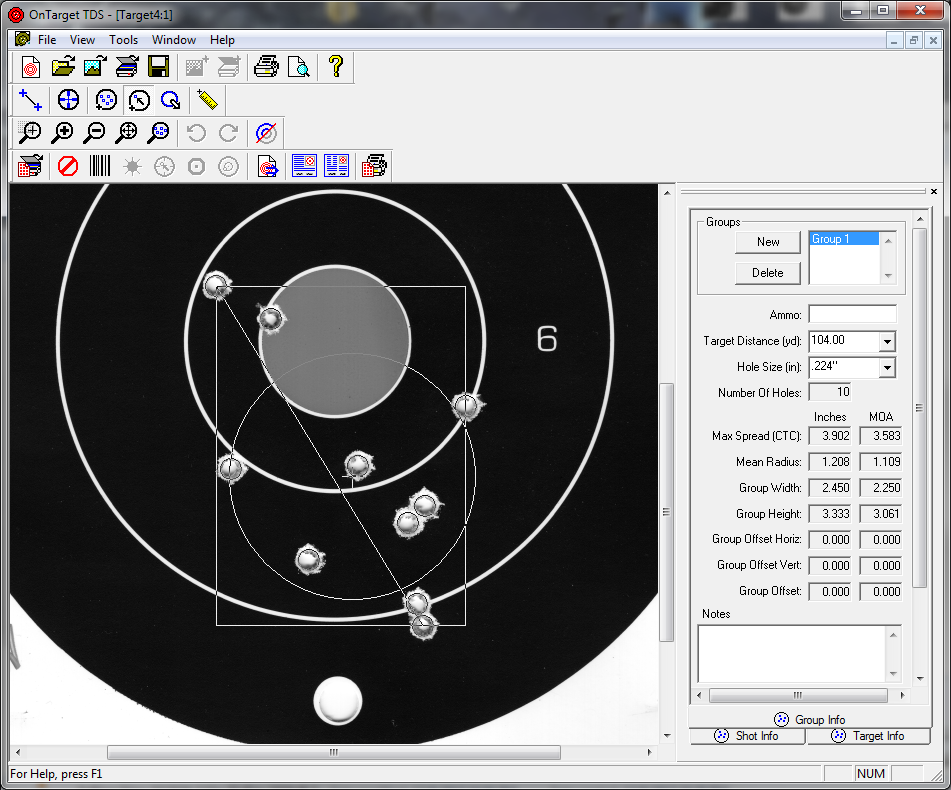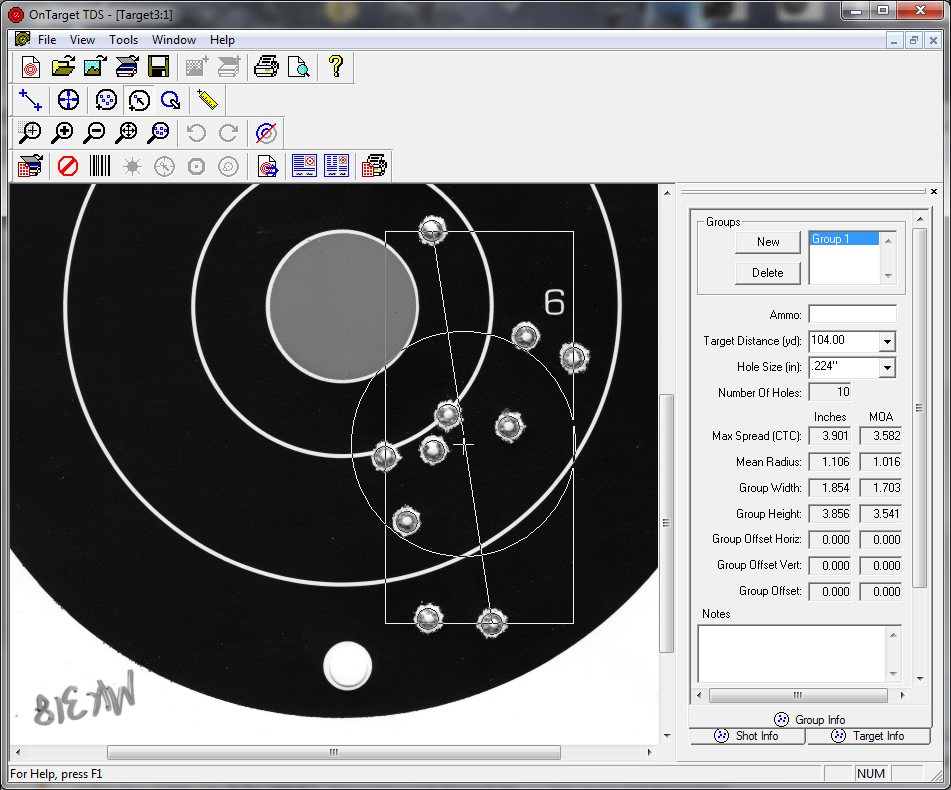Next up for the Big Freakin’ Cartridge Test is Federal’s T556TNB1 load, which is the civilian market name for the Mk.318 SOST projectile developed by US SOCOM as a “barrier blind” round for the M4 Carbine and Mk. 18 CQB upper receiver. This ammunition uses a reverse drawn jacket to improve accuracy, and couples a fragmenting front end with a solid gilding metal base that improves penetration through tough barriers. I love this ammunition, and use it religiously for home defense. The test procedure was as follows:
- Condition ammunition to 70 °F +/- 5 degrees for at least 1 hr (in practice ammunition was always conditioned overnight).
- Mount chronograph to barrel or rail.
- Record the temperature in the conditioned container before each string.
- Withdraw one round of ammunition from the cooler.
- Load and immediately fire the round.
- Cool chamber back to ambient conditions for 30 seconds
- Repeat steps 3 through 6 nine more times.
This procedure was followed for 14.5″, 16.1″, and 20″ barrel length velocity tests. To measure velocity, a Magnetospeed V3 chronograph was used attached to the barrels of the 16.1″ and 20″ uppers, and the rail of the 14.5″ upper. In addition, three 10 shot groups were shot for each round through my Criterion 14.5″ chrome-lined 1:8 twist hybrid contour midlength barrel in .223 Wylde, to determine accuracy. These targets were then analyzed using OnTarget analysis software.
The chronograph results for the 14.5″ barrel are as follows (Shot #, followed by muzzle velocity in ft/s):
1. 2,929
2. 2,902
3. 2,912
4. 2,938
5. 2,896
6. 2,922
7. 2,894
8. 2,936
9. 2,910
10. 2,911
Which gave us the following figures:
Min: 2,894 ft/s
Max: 2,938
Avg: 2,915
Standard Deviation: 15.7
Extreme Spread (highest minus lowest): 44
These figures are exactly the sort of thing we’d expect from production military ammunition designed specifically for this barrel length. Both the SD and ES of this ammunition were quite reasonable from this barrel length, and among the best results achieved so far with the 14.5″ tube. Velocity was good, as expected, only 5 ft/s shy of the nominal 2,920 ft/s we’d expect for M855 from the M4 Carbine’s barrel length (Mk. 318, though loaded with a different projectile than M855, is specified for comparable muzzle velocities).
Accuracy for the Mk. 318 was a little on the disappointing side, however. I have previously gotten excellent results with this same ammunition, though not under the controlled conditions used for this test:
Average extreme spread for the three groups was 3.702 MOA, while average mean radius for the three was 1.096 MOA. These numbers are not the kind most shooters want to see with their rifles and ammunition, but it’s worth noting that every accuracy test so far has been disappointing in some way. This suggests one or a combination of three things:
- My (lack of?) skill is adding a significant amount of dispersion to each group
- The 14.5″ upper I am using has some accuracy issue
- Science is unkind to our previously held notions about rifle accuracy
We’ll discuss these factors in more detail in a later post. For now, stay tuned for velocities for the Mk. 318 from 20″ and 16.1″ barrel lengths.
 Your Privacy Choices
Your Privacy Choices



